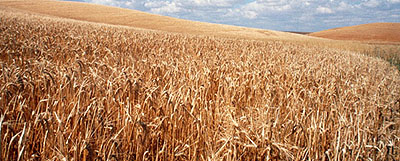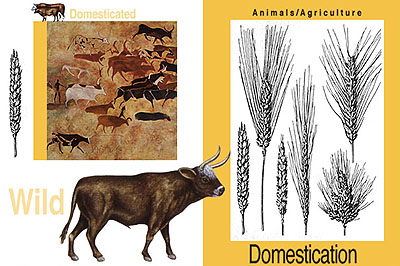Domestication
- page 1 -
Domestication
Questions to consider:
- What are the characteristic plants and animals exploited by the early regional civilizations [the Near East, South Asia, the Far East, sub-Sahara Africa, North and South America]?
- How did Old World agriculturists remedy the inadequacies of a diet based on barley, wheat, or millet?
- Why is Old World agriculture, unlike New World [ancient American] agriculture, always associated with domesticated animals?
In contrast to hunting and gathering as a mode of life, agriculture means modifying the environment in order to exploit it more effectively. Agriculture alters both the animals and plants it domesticates. Ultimately, it changes the very landscape itself.

The growing of a single crop in a field by definition substitutes a biological monoculture for the complex ecological system that existed on the same ground previously. This change has several effects. The intended effect of crop-growing is that the quantity of food stuffs (wheat in this case) desired by the human farmer is greatly increased. One unintended effect is that the nutrients in the soil necessary to the growing of this particular plant are depleted. Over a relatively short period of time, growing a single crop can deplete even very rich soil. This was a problem which rendered many early agricultural sites uninhabitable after a time. It is still a very serious problem.
There are other unintended effects of crop-growing. The human farmers are consciously altering the environment and "selecting for" the plants they need for food or fiber. Unwittingly, they are also "selecting for" any organism that can live on wheat: wheat-eating "vermin," pathogens, and diseases of wheat, etc.
Thus, paradoxically, by increasing their food supply, farmers simultaneously increased threats to their food supply.


